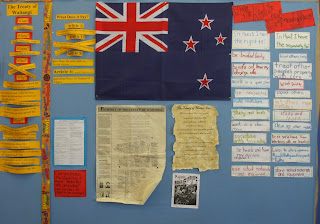Welcome back to our first post of the year!
This year we are Year 8s and some of our Huia 1 students (from last year) have moved to different schools and different classes, but don't worry we will still keep you updated with what's happening in our class or in our school.
We all had an awesome Christmas and summer holiday.
Our class is a Year 7 and 8 mixed class, although we still have some of our last year's students. On our first day back at school we were desperate to know which class we were going to be in and to know who will be in our classes. We haven't done much work lately since it's our first day back, although we are doing some tests. (
Note from Mrs Vincent - we've done a lot more work since this was first written....) We also have new students that have arrived in our school. The new students to our school that are in our class are Ben and Anton. Surprisingly, we have 28 students in our class compared to last year where we had 31.
We have a link to the school website and you can also find out about what's happening in other classes.
We have been updating a bit about the Treaty Of Waitangi, and just basic facts about it. See if you can answer or quiz your family or a friend about these questions: (The answers are down below)
1. When was the Treaty Of Waitangi signed?
2. Where can you find the original Treaty on display right now?
3. Who is the Treaty between?
4. What year was the first New Zealand flag decided?
5. Who signed the Treaty first?

James Busby - his house was where the Treaty was signed.

This is what the Treaty looks like now. It is in the New Zealand Archives in Wellington.

Hobson was called ashore to sign the Treaty just after noon on the 6th of February because many Maori were starting to pack up and leave. Hobson was still dressed in his civilian clothes and only carried his uniform hat.

Captain William Hobson

Hone Heke became unhappy with the consequences of The Treaty and chopped down the flagpole at Rusell to show his dissatisfaction with how Maori in the Bay of Islands had been affected.
ANSWERS:
1. 6th February 1840
2. Archives New Zealand, Wellington
3. Maori Chiefs and The Crown
4. 1834

5. Hone Heke
Fact: Hone Heke signed the Treaty Of Waitangi first, although Kawaiti had his name signed above Hone Heke's name so it might seem that he signed it first.
By: Nikeeta And Brittany



















 5. Hone Heke
5. Hone Heke